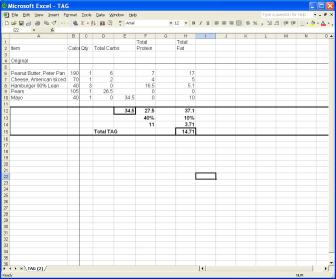 If you read my Managing Blood Sugar With Gastroparesis post, you might remember me mentioning the woman that went to the Mayo Clinic that was told by an endocrinologist there that she would never be able to get her A1c below 7. I knew that was not true because I had done that. Even though I have managed to keep my A1c in the 5s, I am constantly looking for new ways to try and improve the things that I am doing.
If you read my Managing Blood Sugar With Gastroparesis post, you might remember me mentioning the woman that went to the Mayo Clinic that was told by an endocrinologist there that she would never be able to get her A1c below 7. I knew that was not true because I had done that. Even though I have managed to keep my A1c in the 5s, I am constantly looking for new ways to try and improve the things that I am doing.
Having a Dexcom has really been a huge help because I am able to set alarms to warn me when my blood sugar starts to go high or when it starts to go low. I especially like the fact that I can set the Dexcom high alarm for 120 (the lowest you could set the Navigator high alarm was 140). There were plenty of times pre-CGMS that I would literally go from 80 to 180 in one hour when my food would start to digest. With the Dexcom, I am able to get insulin working before I get too high so I am not having as many highs.
The next thing I added was getting an Animas Ping at the end of June. Although I have had some struggles with the pump, it has really helped me to fine tune my basal rates. In the beginning, I was reluctant to try the extended bolus feature (combo bolus on the Ping). Then Cheri in the Animas Group on TuDiabetes told me about Danny’s TAGger’s Group . In the beginning, I wasn’t sure that would work, but I decided to give it a try and am now hooked.
Danny also started the Flatliner’s Club to share CGMS successes and also failures. That helps makes diabetes fun! Although I had several nice 3 hour graphs before joining the group, I never had a 6 hour graph. With the changes I was making with TAG, my pump and my Dexcom, I have been working at trying to get some longer graphs.
Last week, I did some basal testing and knew that I needed to slightly adjust my evening basal rate. I also decided to drop my daily carb total from 86 grams per day to 38 per day to see if I could make my line a little flatter without as many carbs. Prior to learning TAG, eating carbs was actually easier than eating protein with gastroparesis, but I still tried to limit my carbs. Saturday night, I bumped my evening basal up another notch because my blood sugar started going up, but when I looked at my graph yesterday morning, I was pretty happy with my 24 hour graph. I wanted to wait until after 12:30 to take a picture because Saturday morning, I had a bad set so my blood sugar shot up and I wanted to wait until after that part dropped off my graph. I ended up going low and because I was outside of my 70 and 120 lines on the Dexcom, they don’t qualify for a Flatliner’s 24 hour graph, but I was still pretty proud and wanted to share the results here.
I also did a “cheat” picture and changed my high range to 140 and my low range to 60 just to see what it looked like:
This is the Hourly Report from Dexcom. The bottom half is Saturday afternoon into Saturday night and then after midnight to noon Sunday is on the top half. My high for that period was 139 Saturday night. I had two lows – the first about 1:30 PM on Saturday, which was an over-correction for the bad site and another Sunday morning from too much going up and down the stairs trying to un-decorate from Christmas. I was very happy with an overall average of 94 and a standard deviation of 17 though. I wish I knew the name of the endork at the Mayo Clinic to send a copy of this to!
I especially want to thank everyone in the DOC for helping me. I know that I had to put the work in to make it possible, but I would not have been able to do it without all the valuable tips that I have received from the DOC. My next goal is to have that 24 hour graph without any little blips outside those lines!












